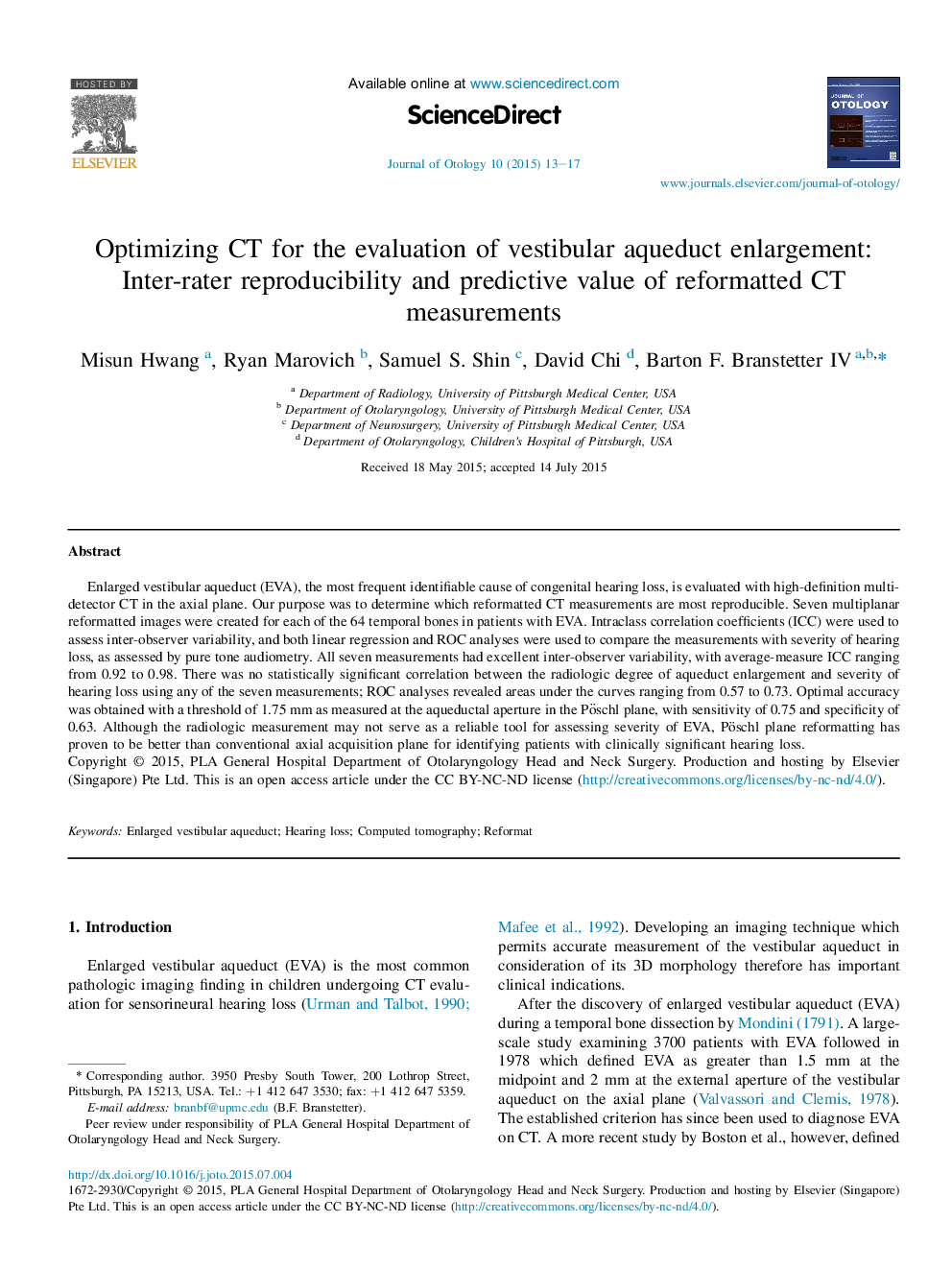| Article ID | Journal | Published Year | Pages | File Type |
|---|---|---|---|---|
| 4116645 | Journal of Otology | 2015 | 5 Pages |
Enlarged vestibular aqueduct (EVA), the most frequent identifiable cause of congenital hearing loss, is evaluated with high-definition multi-detector CT in the axial plane. Our purpose was to determine which reformatted CT measurements are most reproducible. Seven multiplanar reformatted images were created for each of the 64 temporal bones in patients with EVA. Intraclass correlation coefficients (ICC) were used to assess inter-observer variability, and both linear regression and ROC analyses were used to compare the measurements with severity of hearing loss, as assessed by pure tone audiometry. All seven measurements had excellent inter-observer variability, with average-measure ICC ranging from 0.92 to 0.98. There was no statistically significant correlation between the radiologic degree of aqueduct enlargement and severity of hearing loss using any of the seven measurements; ROC analyses revealed areas under the curves ranging from 0.57 to 0.73. Optimal accuracy was obtained with a threshold of 1.75 mm as measured at the aqueductal aperture in the Pöschl plane, with sensitivity of 0.75 and specificity of 0.63. Although the radiologic measurement may not serve as a reliable tool for assessing severity of EVA, Pöschl plane reformatting has proven to be better than conventional axial acquisition plane for identifying patients with clinically significant hearing loss.
